This cabbage soup has become our regular comfort meal when we want something filling that doesn't weigh us down. After years of making different versions and getting feedback from family dinners, I've figured out how to make cabbage soup that tastes good instead of bland or boring like some people expect. Max was hesitant about eating cabbage at first, but now he asks for this soup when he's feeling under the weather or just wants something warm and cozy.
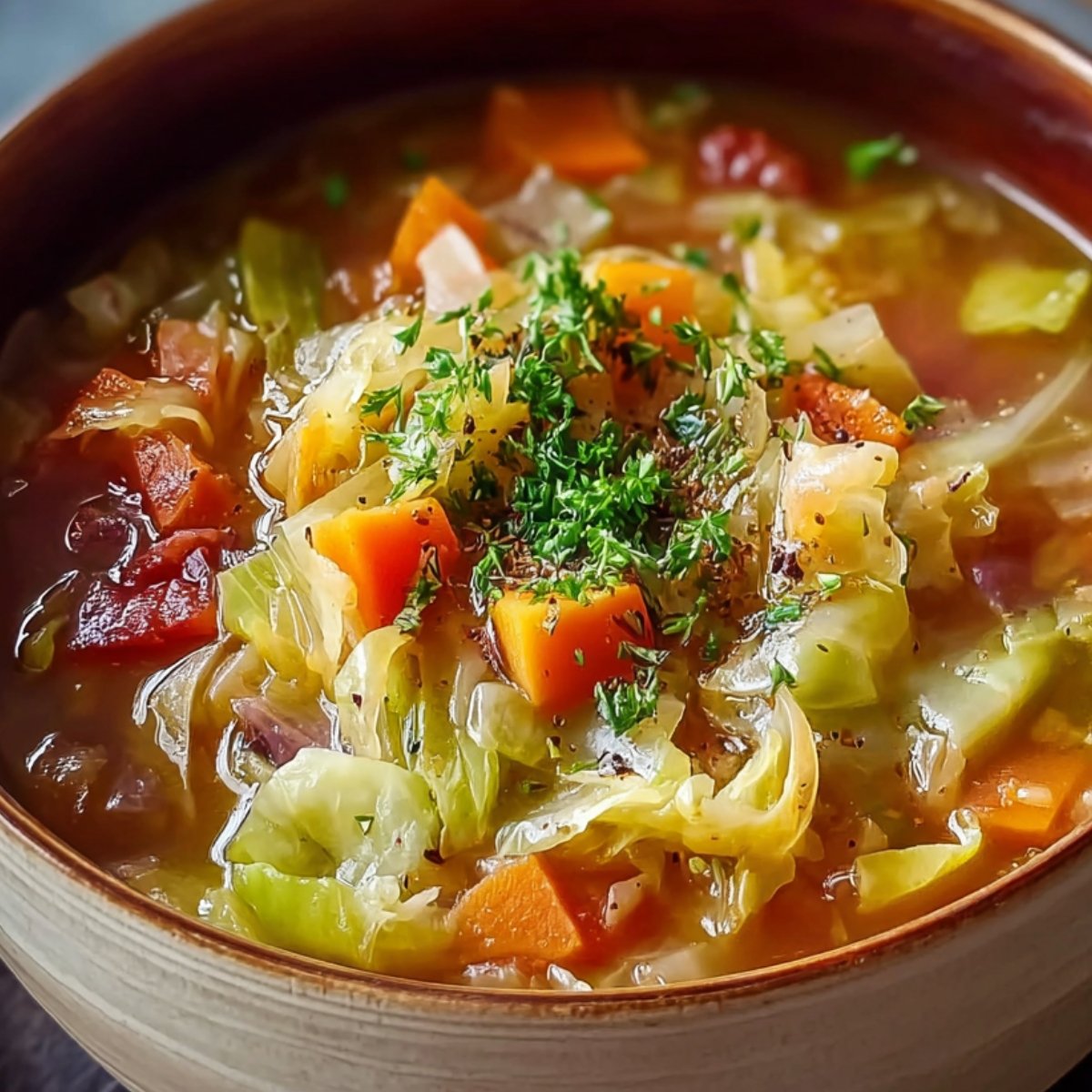
Why You'll Love This Cabbage Soup
This cabbage soup works because it's hearty without being heavy, and it fills you up without making you feel sluggish afterward. The cabbage gets sweet and tender when it cooks down, and the broth develops rich flavor from all the vegetables cooking together. Max loves it because it tastes like "vegetable chicken soup" without the chicken, and I love it because one pot feeds our family for two meals.
What really makes this recipe work for busy families is how you can change it up. You can throw in whatever vegetables you have in the fridge, adjust the seasonings based on what your family likes, and it always turns out good. It's also one of those soups that tastes better the next day, so making extra is never a problem. The best part is watching Max slurp it up and ask for seconds - something I never thought would happen with cabbage.
Jump to:
- Why You'll Love This Cabbage Soup
- Ingredients for Cabbage Soup
- How To Make Cabbage Soup Step By Step
- Smart Swaps For Cabbage Soup
- Creative Takes on Cabbage Soup
- Equipment For Cabbage Soup
- Storing Your Cabbage Soup
- What to Serve With Cabbage Soup
- Top Tip
- Grandma's Hidden Recipe: A Family's Legacy
- FAQ
- Time to Start Cooking!
- Related
- Pairing
- cabbage soup
Ingredients for Cabbage Soup
The Base:
- Green cabbage - One medium head works for most families
- Yellow onion - Adds sweetness when it cooks down
- Carrots - For color and natural sweetness
- Celery - Gives the broth more depth
- Garlic cloves - Don't skip these, they make everything taste better
The Broth:
- Vegetable or chicken broth - Whatever you prefer
- Diced tomatoes - Canned or fresh both work
- Tomato paste - Just a little for richness
- Water - To thin it out if needed
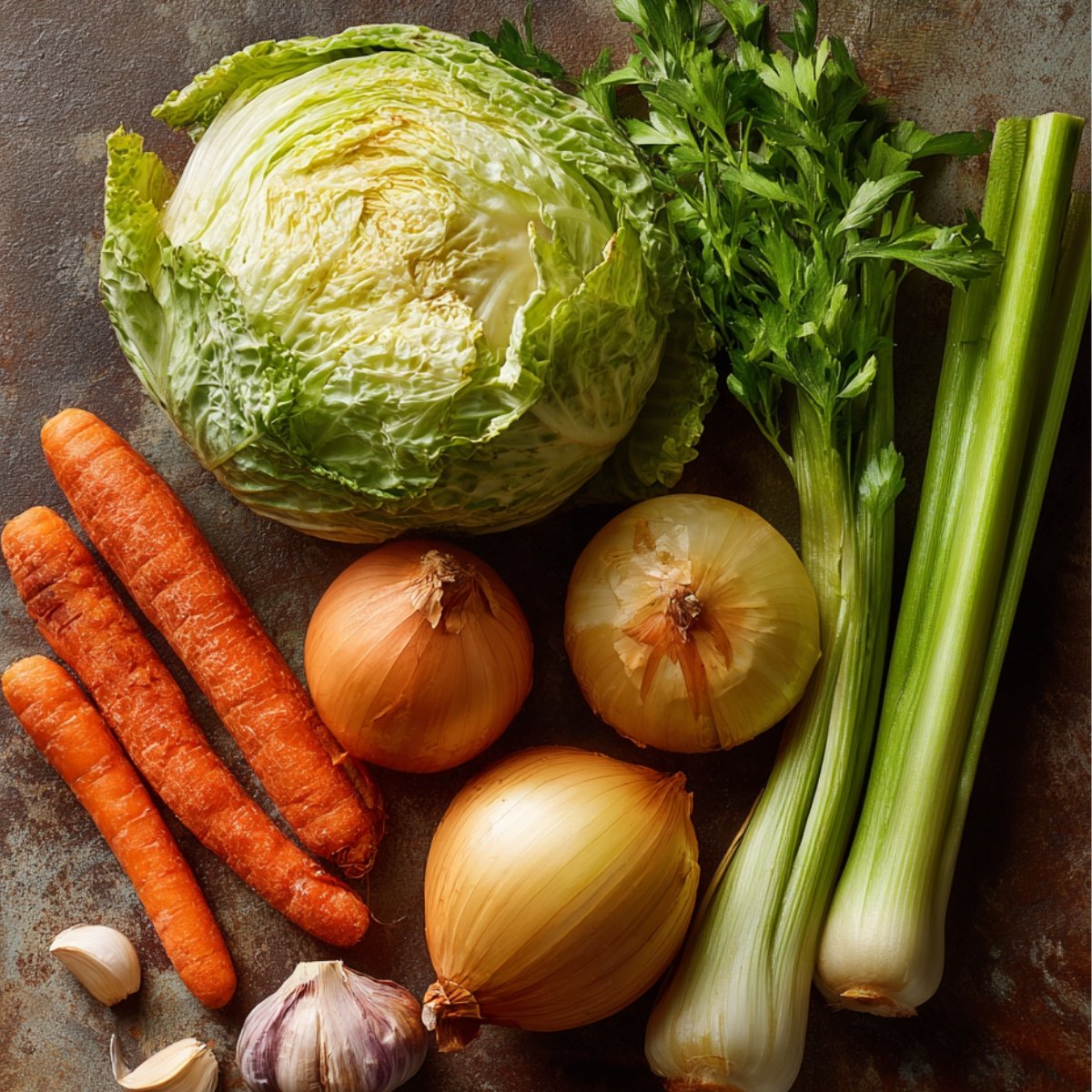
Seasonings:
- Bay leaves
- Dried thyme
- Salt and black pepper
- Paprika - Adds a bit of smokiness
- Red pepper flakes - If you like a little heat
Optional Add-ins:
- Bell peppers
- Mushrooms
- Green beans
- Potatoes for heartiness
Basic Tools:
- Ladle for serving
- Large soup pot
- Sharp knife for chopping
- Cutting board
see recipe card for quantities
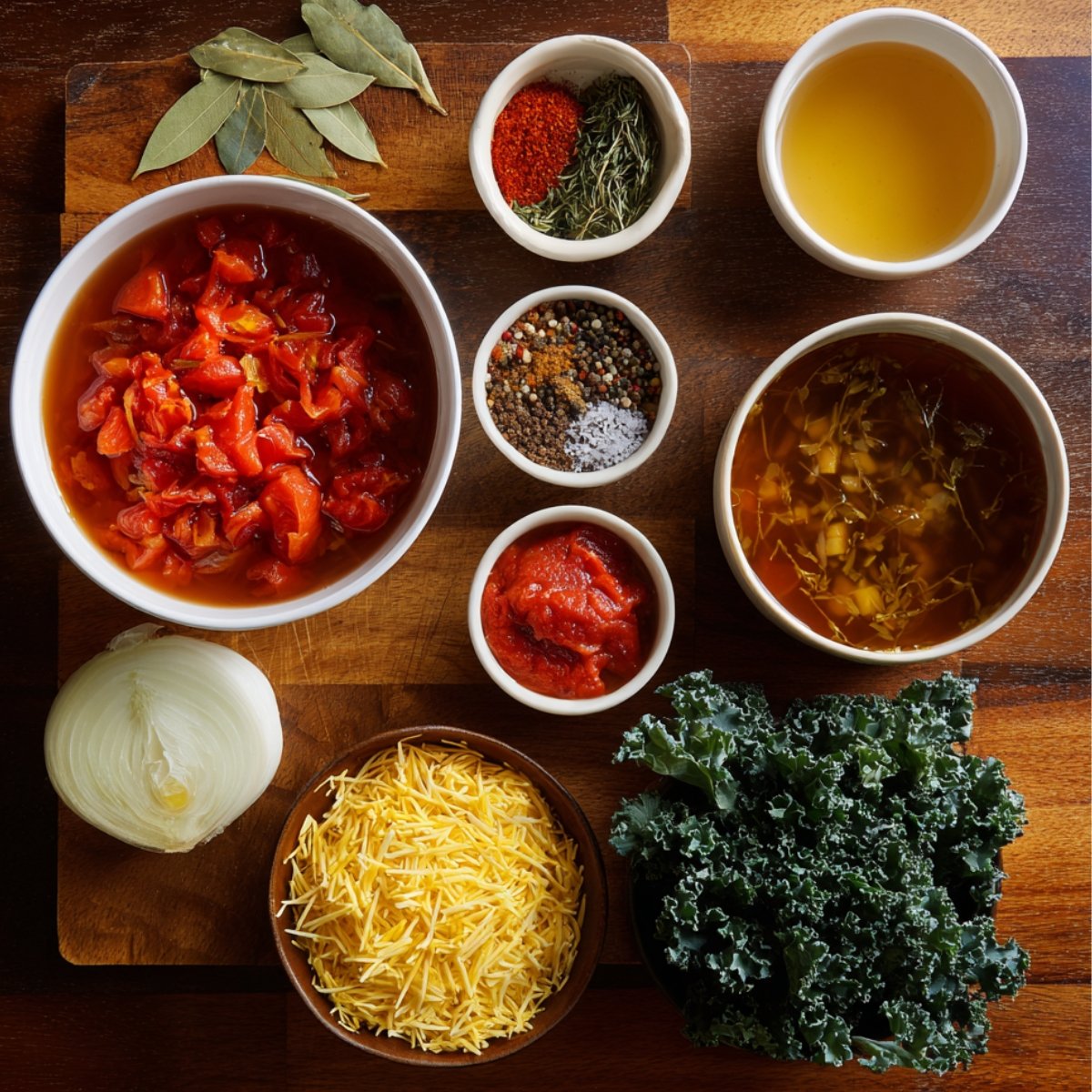
How To Make Cabbage Soup Step By Step
Prep Your Vegetables:
- Chop the cabbage into bite-sized pieces
- Dice the onion, carrots, and celery
- Mince the garlic cloves
- Open your cans of tomatoes and broth
- Have all seasonings measured and ready
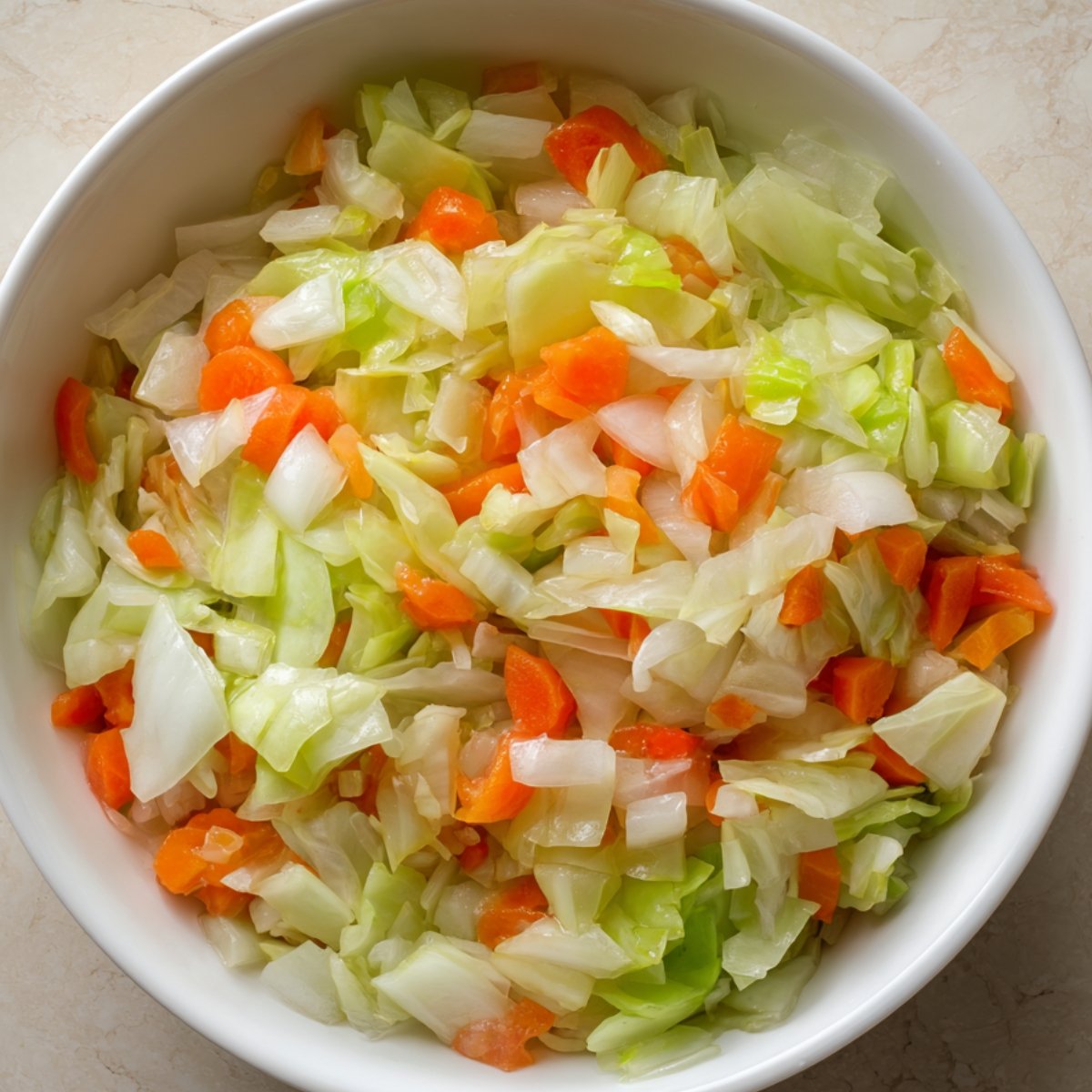
Build the Flavor Base:
- Heat a little oil in your soup pot over medium heat
- Add onions, carrots, and celery first
- Cook about 5 minutes until they start to soften
- Add garlic and cook 1 more minute until fragrant
- Stir in tomato paste and cook 30 seconds
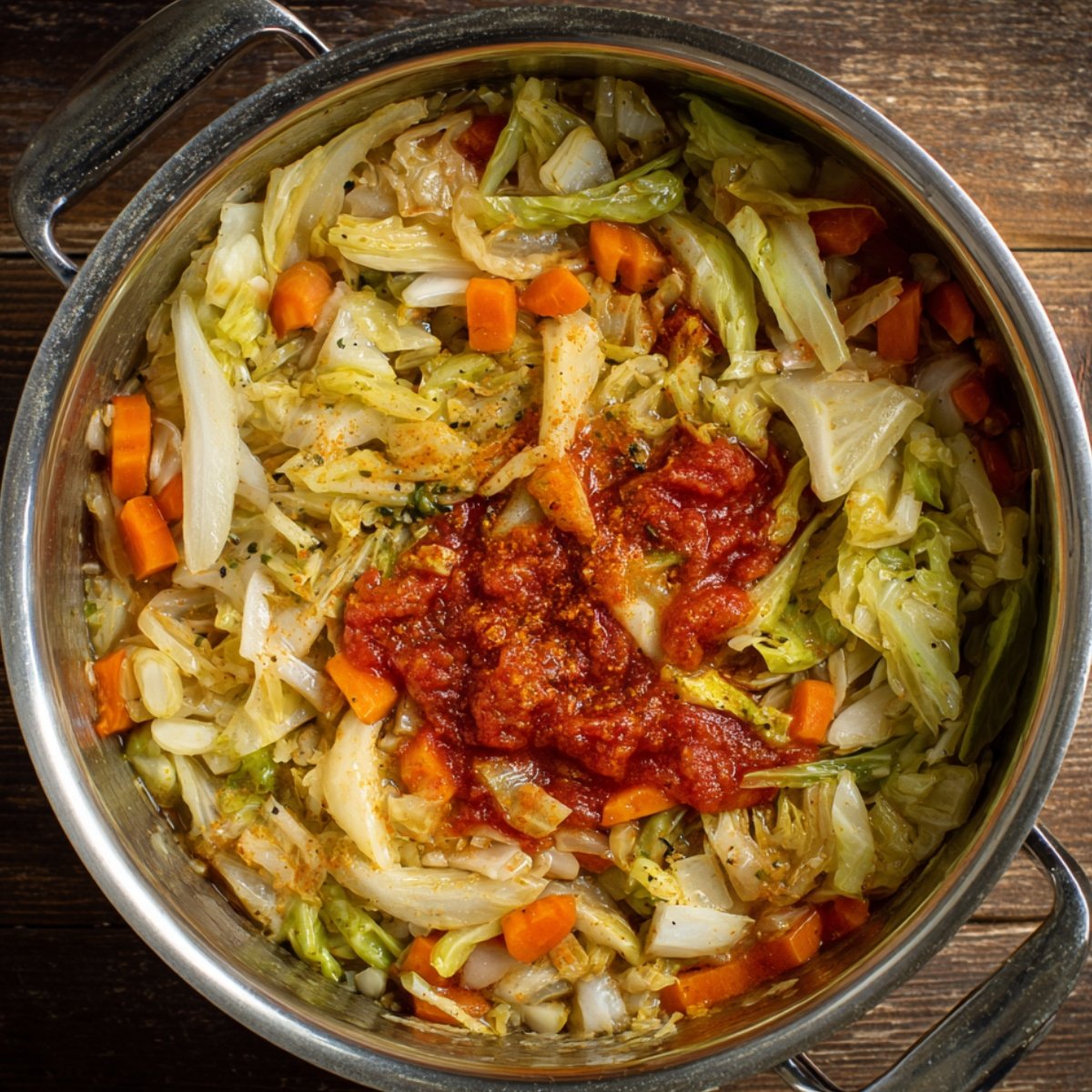
Add Everything Else:
- Pour in the broth and diced tomatoes
- Add the chopped cabbage - it will look like a lot but shrinks down
- Throw in your bay leaves, thyme, and other seasonings
- Bring everything to a boil, then reduce heat to simmer
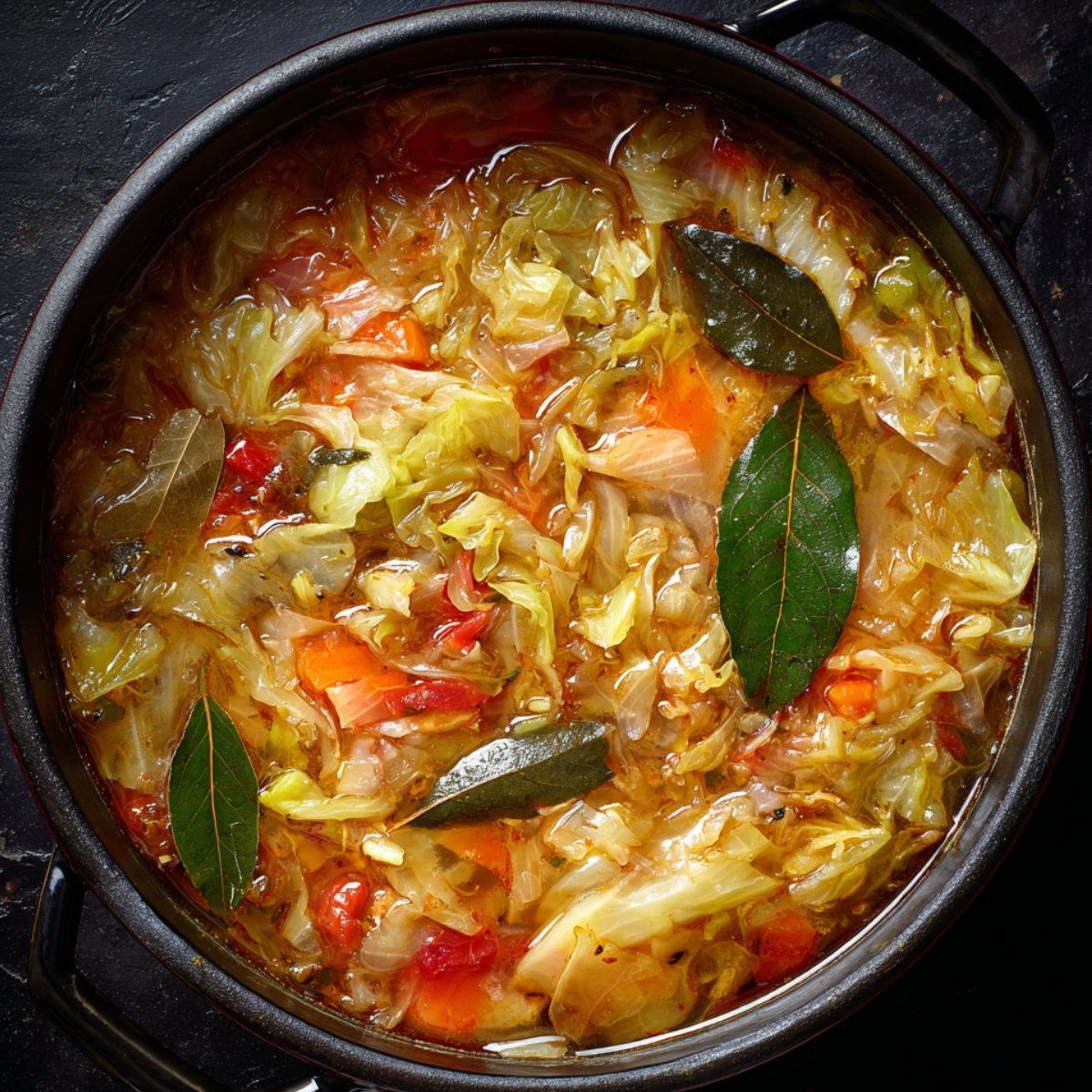
Let It Cook:
- Ladle into bowls and enjoy hot
- Simmer covered for 20-30 minutes until cabbage is tender
- Taste and adjust seasonings as needed
- Remove bay leaves before serving
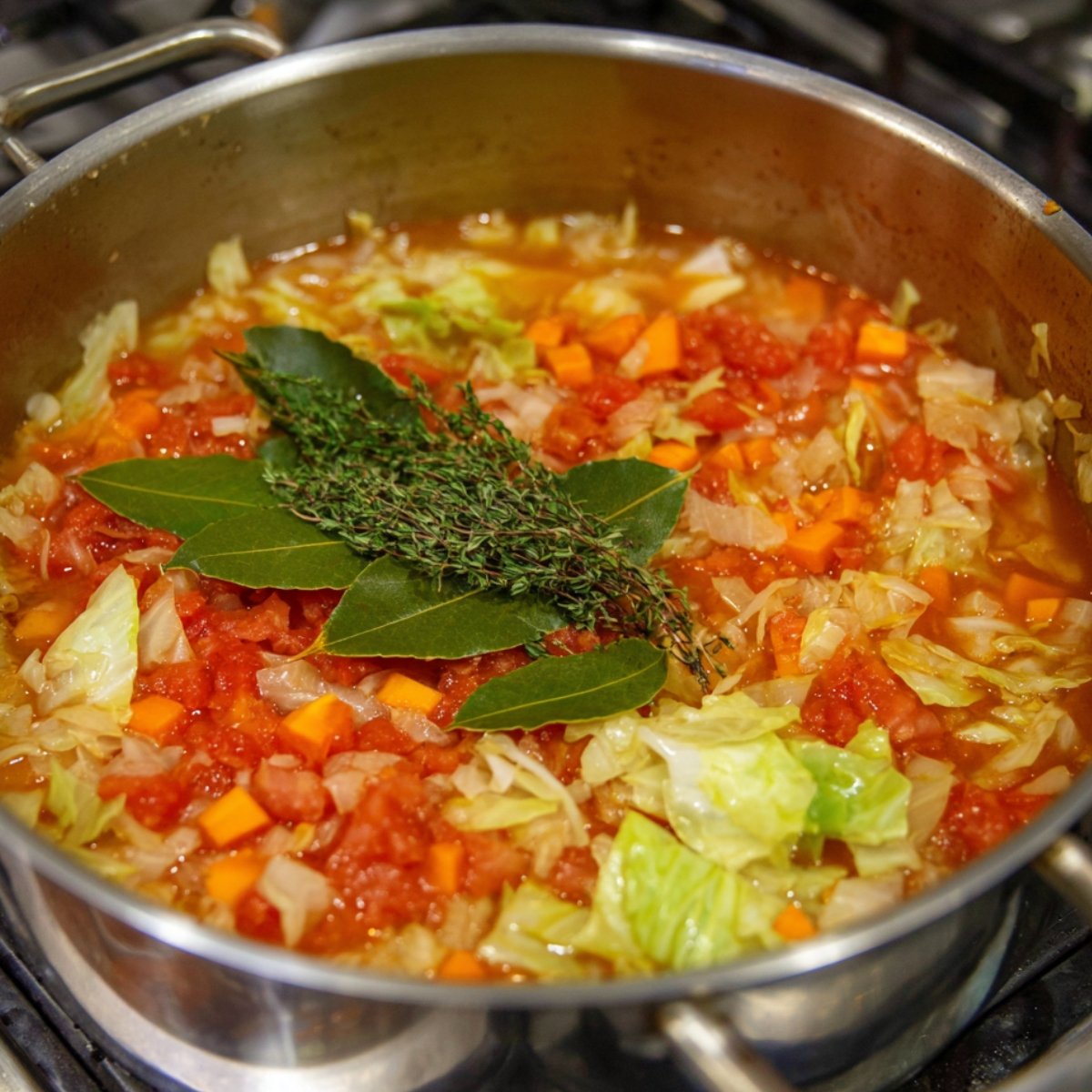
Smart Swaps For Cabbage Soup
Cabbage Alternatives:
- Green cabbage - Use red cabbage for different color
- Fresh cabbage - Bagged coleslaw mix works in a pinch
- Regular cabbage - Napa cabbage cooks faster and milder
- Just cabbage - Add other greens like kale or spinach
Broth Options:
- Chicken broth - Vegetable broth for vegetarian version
- Store-bought - Homemade broth if you have it
- Regular sodium - Low-sodium broth to control salt
- Broth - Water with bouillon cubes works too
Vegetable Changes:
- Fresh tomatoes - Canned diced tomatoes
- Regular onions - Sweet onions or leeks
- Carrots - Parsnips or sweet potatoes
- Celery - Fennel for different flavor
Protein Additions:
- Vegetarian - Add cooked ground beef or turkey
- Plain soup - White beans or lentils for protein
- Basic version - Leftover cooked chicken
- Simple - Italian sausage for heartier meal
Seasoning Swaps:
- Dried herbs - Fresh herbs (use more)
- Thyme - Italian seasoning blend
- Paprika - Smoked paprika for deeper flavor
- Mild - Hot sauce or cayenne for heat
Creative Takes on Cabbage Soup
Hearty Protein Versions:
- Italian style with ground sausage and white beans
- Mexican twist with ground beef, corn, and black beans
- Chicken and rice for a complete meal
- Turkey meatballs for extra protein
International Flavors:
- Asian-inspired with ginger, soy sauce, and mushrooms
- German-style with kielbasa and caraway seeds
- Mediterranean with olives, tomatoes, and oregano
- Polish version with sauerkraut and smoked paprika
Seasonal Variations:
- Fall harvest with sweet potatoes and apples
- Winter comfort with potatoes and root vegetables
- Spring fresh with peas and fresh herbs
- Summer light with zucchini and fresh tomatoes
Texture Changes:
- Creamy version - blend half the soup for thickness
- Chunky style - add diced potatoes and green beans
- Brothy and light - more liquid, less vegetables
- Thick and hearty - less broth, more vegetables
Quick Weeknight Versions:
- Freezer bag prep - chop ahead for busy nights
- Slow cooker method - dump everything in morning
- Pressure cooker - ready in 15 minutes
- One-pot with pasta added directly
Equipment For Cabbage Soup
- Large soup pot or Dutch oven - You need room for all that cabbage
- Sharp knife - For chopping all the vegetables efficiently
- Large cutting board - Gives you space to prep everything
- Wooden spoon - For stirring without scratching your pot
- Ladle - Makes serving much easier
Storing Your Cabbage Soup
Fresh Soup Storage (3-4 days):
- Cool completely before putting in fridge
- Store in airtight containers or covered pot
- Keeps well for up to 4 days refrigerated
- Reheat gently on stovetop, stirring occasionally
Freezer Storage (2-3 months):
- Cool soup completely first
- Leave some room at top of containers for expansion
- Label with date and contents
- Thaw overnight in fridge before reheating
Reheating Tips:
- Stovetop works best - heat slowly over medium-low
- Add a splash of broth or water if it's too thick
- Microwave in short bursts, stirring between
- Taste and adjust seasonings after reheating
Make-Ahead Strategy:
- Double the recipe since it freezes so well
- Chop vegetables the night before
- Make full batch on weekend for weekday lunches
- Soup actually tastes better the next day
What to Serve With Cabbage Soup
Cabbage soup works well with sides that add texture and complement its light, vegetable-forward flavor without making the meal too heavy. Crusty bread or warm dinner rolls are perfect for dipping and help make the soup feel more filling. A simple grilled cheese sandwich turns this into a classic comfort meal that kids love. For something heartier, try serving it with baked potatoes topped with cheese and sour cream.
Since cabbage soup is naturally light, you can pair it with more substantial sides if you want a bigger meal. Cornbread adds sweetness that balances the savory vegetables, and a small salad with vinaigrette keeps things fresh. If you're serving this as part of a larger meal, it works well alongside roasted chicken or meatloaf as a lighter side dish. For families trying to eat more vegetables, this soup paired with whole grain crackers or a slice of hearty multigrain bread makes a satisfying lunch that doesn't leave you hungry an hour later.
Top Tip
- The biggest mistake people make with cabbage soup is adding the cabbage too early and cooking it too long, which turns it into mushy, sulfur-smelling mush that nobody wants to eat. Here's the secret timing: add your cabbage in the last 20-25 minutes of cooking, not at the beginning.
- Start by building your flavor base with onions, carrots, celery, and garlic first. Let those cook until soft and fragrant. Then add your broth, tomatoes, and seasonings and let that simmer for about 10 minutes to develop flavor. Only then should you add the chopped cabbage.
- This way, the cabbage gets tender but still has some bite to it, and it keeps that fresh, sweet flavor instead of turning bitter and overcooked. I learned this the hard way when I dumped all the cabbage in at the beginning one time - we ended up with cabbage mush that even our dog wouldn't eat.
Grandma's Hidden Recipe: A Family's Legacy
My grandmother kept a secret about her cabbage soup that she never told anyone until I was eighteen years old. She'd make this soup whenever someone in the family was sick or going through hard times, and it always seemed to work some kind of magic. People would feel better after eating it, not just physically but emotionally too. For years, I thought it was just because she made it with love.
Then one day while helping her clean out her recipe box, I found a small piece of paper tucked behind her soup recipe card. It was her mother's handwriting from the 1940s, and it said "add one bay leaf for every person you're cooking for, plus one extra for the house." She'd been counting out bay leaves based on how many people she was feeding, but always added that extra one "for protection and comfort."
FAQ
What ingredients go in cabbage soup?
Basic cabbage soup contains cabbage, onions, carrots, celery, garlic, broth, and seasonings like bay leaves and thyme. Many recipes add diced tomatoes for flavor and color. You can customize with proteins like ground meat or beans, and other vegetables based on preference.
Does the 7 day cabbage soup diet really work?
The cabbage soup diet is a very low-calorie crash diet that may cause short-term weight loss, but it's not sustainable or nutritionally balanced. Any weight lost is mostly water weight and returns quickly. For healthy, lasting weight management, focus on balanced eating and regular exercise instead.
What makes cabbage soup taste better?
Proper seasoning is key - don't skip herbs like thyme, bay leaves, and garlic. Building a flavor base by cooking onions, carrots, and celery first helps develop depth. Adding diced tomatoes or tomato paste gives richness, and timing the cabbage addition prevents overcooking and bitterness.
What spices go with cabbage soup?
Classic spices include bay leaves, dried thyme, garlic powder, paprika, salt, and black pepper. For international flavors, try caraway seeds for German-style, ginger and soy sauce for Asian-inspired, or cumin and chili powder for Mexican variations. Fresh herbs like parsley or dill work well as garnish.
Time to Start Cooking!
Now you have everything you need to make delicious, comforting cabbage soup - from proper timing to grandmother's bay leaf tradition. This humble soup proves that the simplest ingredients can create the most satisfying meals when treated with care and attention.
Ready for more warming comfort foods? Try our The Best Butternut Squash Soup Recipe for rich, creamy fall flavors that pair beautifully with crusty bread. Want something sweet to finish the meal? Our The Best Butternut Squash Soup Recipe combines two dessert favorites into one incredible treat. Craving something with more protein? Our The Best Sopapilla Cheesecake Recipe brings fresh, vibrant flavors to your dinner table in just 20 minutes!
Share your cabbage soup success! We love seeing your cozy bowls!
Rate this recipe and join our cooking community!
Related
Looking for other recipes like this? Try these:
Pairing
These are my favorite dishes to serve with Cabbage Soup

cabbage soup
Ingredients
Equipment
Method
- Chop cabbage, dice onion, carrots, celery, and mince garlic. Open canned tomatoes and measure seasonings.
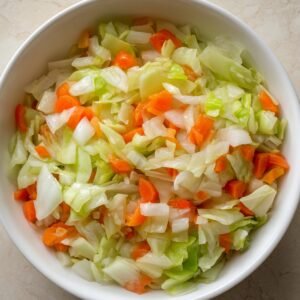
- Heat oil in pot, sauté onion, carrots, and celery ~5 minutes. Add garlic, cook 1 minute. Stir in tomato paste, cook 30 seconds.
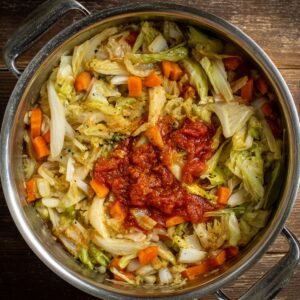
- Pour in broth, tomatoes, and water if needed. Stir in cabbage, bay leaves, thyme, paprika, and red pepper flakes. Bring to boil.

- Reduce to simmer, cover, and cook 20-25 minutes until cabbage is tender but not mushy.
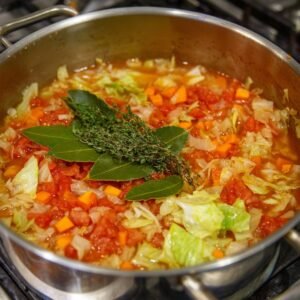
- Remove bay leaves, taste and adjust seasonings. Ladle into bowls, serve with bread or salad.











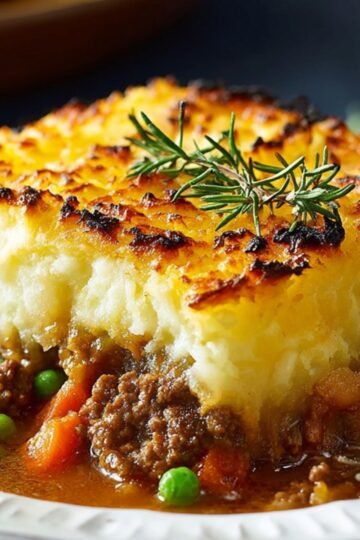


Leave a Reply